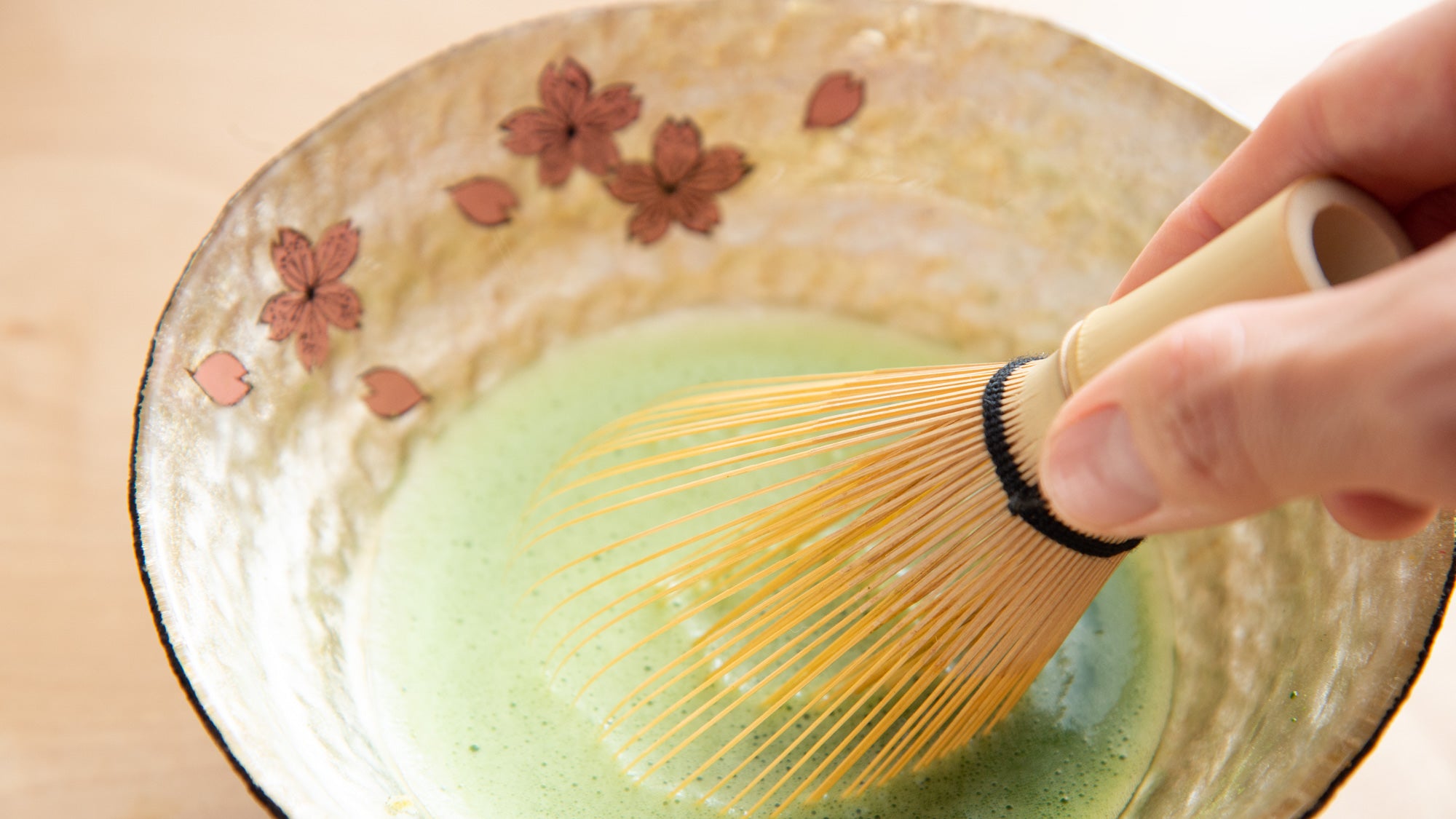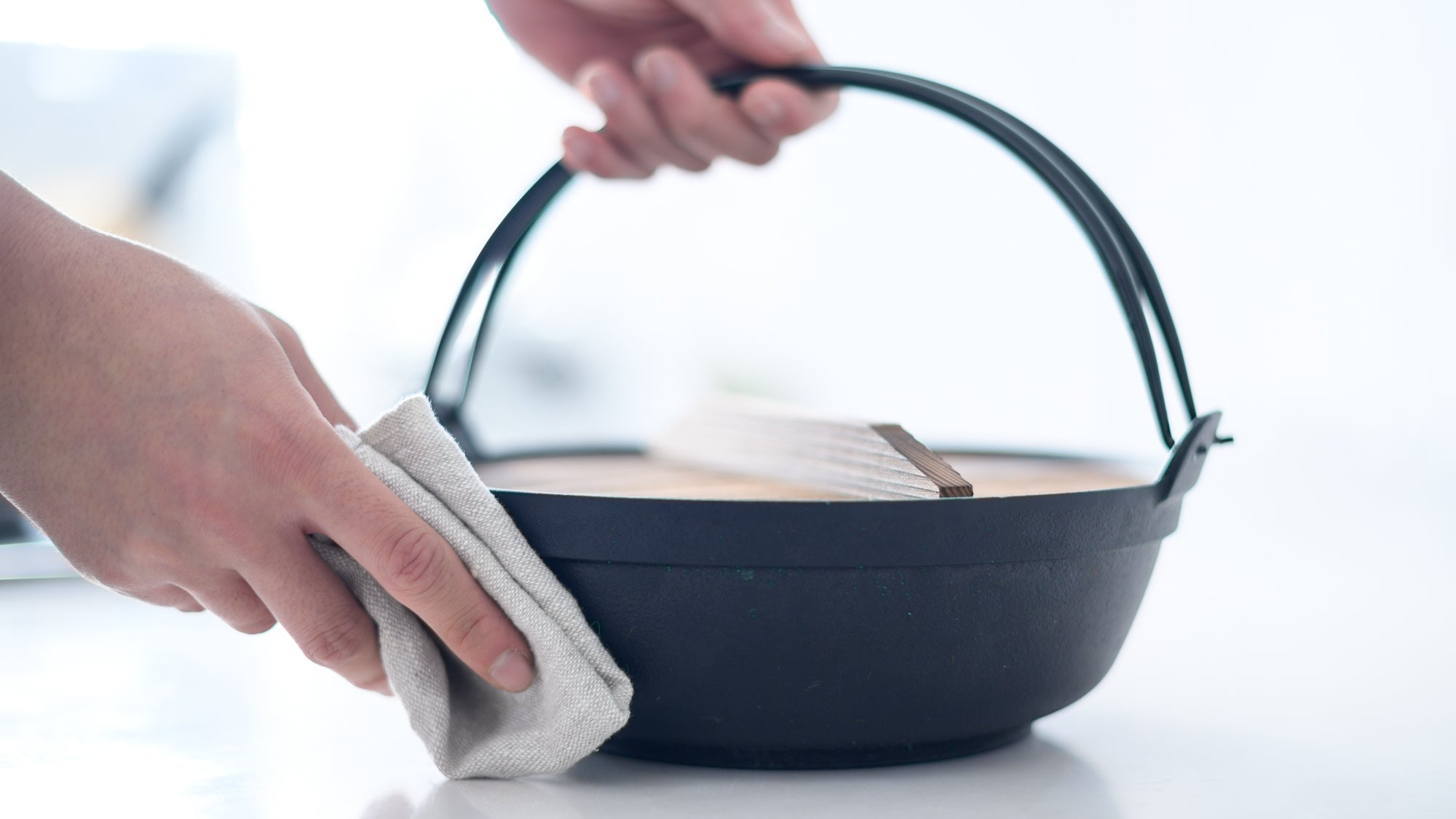30 March 2022
How to Care for Metal Crafts

The history of metalwork in Japan can be traced back to the Yayoi period (About 300 BC to 300 AD). Bronze and iron were imported from the continent at the same time, leading to the development of metalwork in various regions of Japan.
The main techniques used in Japanese metalwork are casting, forging, hammering, and engraving. The metals used in Japanese metalwork are gold, silver, copper, tin, iron- known since ancient times as the “Go-Kin” means five metals, and alloys. Each metal has a different luster, strength, thermal conductivity, heat retention, moisture resistance, and corrosion resistance.
Let's talk about how to take care of Japanese metalwork, for each metal.
Common Care Instruction

After each use, gently hand wash with a soft cloth or sponge and dishwashing detergent. Avoid using cleansers, metal scrubs, and scrapers, or follow the care instructions for each product and metal.

After washing, wipe off the water well with a dry cloth to prevent discoloration and rusting.
To avoid scratches or damage from falling, store in a stable cabinet or in a safe place.
Microwave, Oven & Dishwasher
Please avoid using microwave. All metal products are not microwave-safe.
For oven use, please follow the instructions for each item or metal. For example, ironware pans can be used in the oven, but tinware should never be placed in the oven or over an open flame.
The use of dishwashers and harsh detargents depends on each product, but in general, hand wash with mild dishwashing detergent is recommended.
Special Care of Each Materials
Each metal has its own unique nature, such as thermal conductivity and strength. Learn about the features of each metal and follow the care instructions.
Goldwork

Gold has been a symbol of wealth, power and immortality for kingdoms and authorities all over the world, and in Japan, it was first discovered in around the 8th century in area of Miyagi prefecture. At the time, the Great Buddha of Todaiji Temple in Nara prefecture was under construction, and about 150 kilograms (about 330 pounds) of gold was used to gild it. In addition, Japan was described as "the land of gold" in Marco Polo's "Description du Monde (The Travels of Marco Polo)," due to the trade with China based on the use of gold sand.
Gold's ductility allows it to be stretched as thin as 1/10,000th of a millimeter, and it is used as "gold leaf" to decorate various Japanese crafts, from Japanese lacquerware to Japanese paintings. It is also often combined with other materials in metalwork, such as used for inlaying.
To care for tableware containing gold, wash it gently with use a soft cloth or sponge and dishwashing detergent, then wipe off the water with soft cloth. Avoid leaving the gold leaf part in water for a long time, or if it is exposed to acidic foods such as dressing for a long time, it risks peeling off.
Silverware
Silverware is an item that symbolizes the wealth of a house in Europe, but also has been used in Japan for over 1000 years. Silver has the highest thermal conductivity of all metals, so silverware is especially good for drinking cold beverages.
Silverware is an item that symbolizes the wealth of a house in Europe, but also has been used in Japan for over 1000 years. Silver has the highest thermal conductivity of all metals, so silverware is especially good for drinking cold beverages.
Now, Tokyo is the center of production of various silverware such as tableware, ornaments, and figurines are made by hammering and engraving.
Silverware will sulfurize and turn black over time if it is exposed to air. In Japan, tarnishing of silver is often valued as “Ibushi-Gin (smoked silver)”, but to prevent silverware from tarnishing, clean it thoroughly with dishwashing detergent after each use, and then dry it thoroughly with a dry cloth before storing it.
To polish a discolored silverware, soak a soft cloth in warm water and polish the tarnished area with baking soda, then wipe dry with another dry cloth.
Copperware

Copper is the second most thermally conductive metal after silver, and because it is more common than silver as a resource, it is easy to obtain in large sizes and is favored as a daily product. Especially in pots and pans and other cooking utensils that use thermal conductivity, copperware is used by professional chefs because it can cook food well and evenly. In addition, copperware is kept in hygienic conditions because of the sterilizing effect of copper ions.
Copperware has a tendency to tarnish when it is exposed to air, resulting in blackening and verdigris (copper rust). The verdigris color is bright and beautiful green, so some items are artificially rusted for decoration.
Also copperware is sensitive to acids and salts, so keeping food in the vessel for a long time may harm both the vessel and taste of the food. After cooking, please move the food to another container soon.
For care for copperware, wash it with a soft sponge and dishwashing detergent after use, wipe it dry, and store it in a dry place. For best results, rinse with hot water after cleaning. To avoid scratching the surface, please do not use a steel scrubber.
To remove verdigris from copper that has occurred outside of the decoration, you can polish off with mixture of vinegar and salt in a one-to-one ratio with a sponge, rinse it well, wipe of the water with a soft cloth. It can also be removed with a soft sponge and a special cream cleanser for copper.
Also, since copper is a soft metal, please be careful not to deform it or shock it.
Tinware

Tin is the rarest metal after gold and silver, and is known as a stable metal that does not rust easily. It is also an excellent material for tableware that retains its beautiful white luster and does not deteriorate for long time. Each metal has its own unique flavor, but tin is said to have a sweet, fruity aroma that enhances the flavor of tea and Japanese sake, so tinware is loved as a drinking vessel for cold beverages.
In Japan, tin has a history of being used for over 500 years as a material suitable for purifying and preserving water, as it is believed to have properties that make it resistant to water spoilage.
Recently, the combination of Tinware with sake has been getting a lot of attention, especially since sake brewers have found that Tinware smoothes out the taste of sake. Afterwords, tin sake cups have been in increasing demand by Japanese restaurants and sake lovers.
Since tin is a soft metal, in addition to hammering, there is also a method of forming it by cutting it with a spinning wheel, unlike other metals. Also, because tinware is easily repairable, an eco-friendly system have been established in Japan in which the tinware workshop would take in old, unusable tinware and repair it or replace it with new pieces.
The weakness of tinware is that tin has a low melting point and melts at 230 degrees Celsius (446 ℉), so it is contraindicated to use tinware in a microwave, oven and over an open flame. Also, because it is a soft metal, touching it with cutlery or scrubbing it with a metal scrubber will scratch it, and dropping it or too much pressure on it by hand will distort it shape.
To care for tinware, wash after use with a soft cloth or sponge and dishwashing detergent, and wipe it dry with a dry soft cloth. If the shine becomes dull, polish with a paste of baking soda mixed with dishwashing detergent or water to bring back the shine.
Additionally, tinware may discolor if left in a sour liquid or if it is left with moisture on it. Please also avoid putting them in the freezer or storing them in the refrigerator for hours, as leaving them in low temperatures may cause them to change or break.
Ironware

Ironware in Japan is mainly made by casting. Iron is a good conductor of heat, also retains heat well, and has iron ions that soften water and make it taste mellower, so ironware is particularly good for tea kettles in Japan. Furthermore, iron tea kettle is an important tool of Japanese tea ceremony.
Ironware is also excellent as cooking utensils such as pots and pans, because the temperature of the surface is evenly heated, resulting in making the best of the ingredients and tasty.
In addition, Japanese ironware is made of pure iron, which is recommended for people who are concerned about their health, as the safe iron components penetrate into the water and food, supplementing the nutritional value.
The most known Japanese ironware is Nambu Ironware, a Japanese craft that has been produced for about 400 years in area of Tohoku region. Its pure iron kettles are usable with electric stove, making them useful in modern life. It is also popular for its artistic craftsmanship and interior design.
For Ironware care, it is important not to leave any moisture after cleaning. Japanese ironware is made of pure iron and does not have any chemical or other coating on the surface. The surface is covered with natural iron oxide (black rust) to prevent rusting, but red rust can occur when it reacts with water or moisture in the air, so proper care is essential. However, as long as you know how to take care of it, it is not difficult to maintain.
There are special care instructions for each type of Ironware, so please check here.
Lastly...
Japanese Metalwork is a practical and beautiful craft that utilizes the characteristics of each metal. Some items may seem very delicate and require a lot of care and attention, but all of them have a great charm that outweighs the effort.
Loving the changes over time is what makes Japanese tableware what it is. Enjoy the products as you care for them and they become a part of your life.








